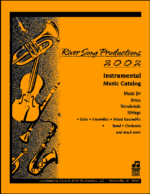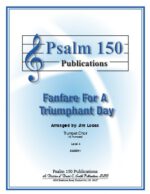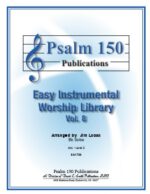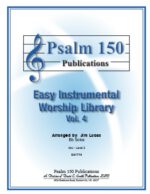-
-
-
O God, Our Help….Passacaglia /Fugue
$5.50Written in typical passacaglia (theme in the bass line) and Fugue fashion, the theme is presented in the piano. The first variation is a gently modified tune in duple with the accompaniment in triplets. In variation two, the tune is rhythmically altered while the upper accompaniment is presented in a spritely fashion. Variation three, the tune is in a triplet moving nature while the theme is in block harmonization in the accompaniment. Variation four is expressive in an almost cadenza fashion. Finally, the Fugue is in a lively four voice manner, ending with a strong proclamation of the title, itself.
-
It Is Well With My Soul
$5.50Traditional setting, slightly contemporary- begins with piano in a motif of the theme. The first section is a stylized rendition of the theme. Then, it continues in the chorus much the same. A transition becomes freer in rhythm and harmony. It then repeats back to the opening sections and then moves to the coda where the piece ends in a solemn fashion.
-
Open My Eyes
$5.50Combined with music from Brahms Second Symphony in the opening. The second section is more straight-forward of the tune itself where it moves to the thematic material of Brahms once again. The coda section is tranquil where it comes to a final rest.
-
Were You There
$5.50A Rich Heffler Music arrangement. This solo is presented in a reverent setting in a minor key. The middle section shifts momentarily to a major mode and then quickly back to a minor mode. The soloist is provided the opportunity to express with a fluid cadenza which gives way to a final statement of harmonic shifts coming to a solemn close.
-
At The Cross
$5.50A Rich Heffler Music arrangement. This solo begins with a calm, reverent setting and is expressive throughout. The middle section is somewhat freer in melodic presentation with the solo more as an obbligato. The ending settles into a quiet, assuring repose.
-
Jesus Paid It All
$5.50A Rich Heffler Music arrangement. The introduction establishes a dirge-like atmosphere joined in by the solo line carrying on the mood. The second section puts the melody in the piano part while solo soars above with a flowing obbligato and then shifts to the melody and concludes with a brief cadenza. The piece concludes with a melodic fragment in the piano and a smooth overflowing obbligato in the solo line
-
-
-
-
-














